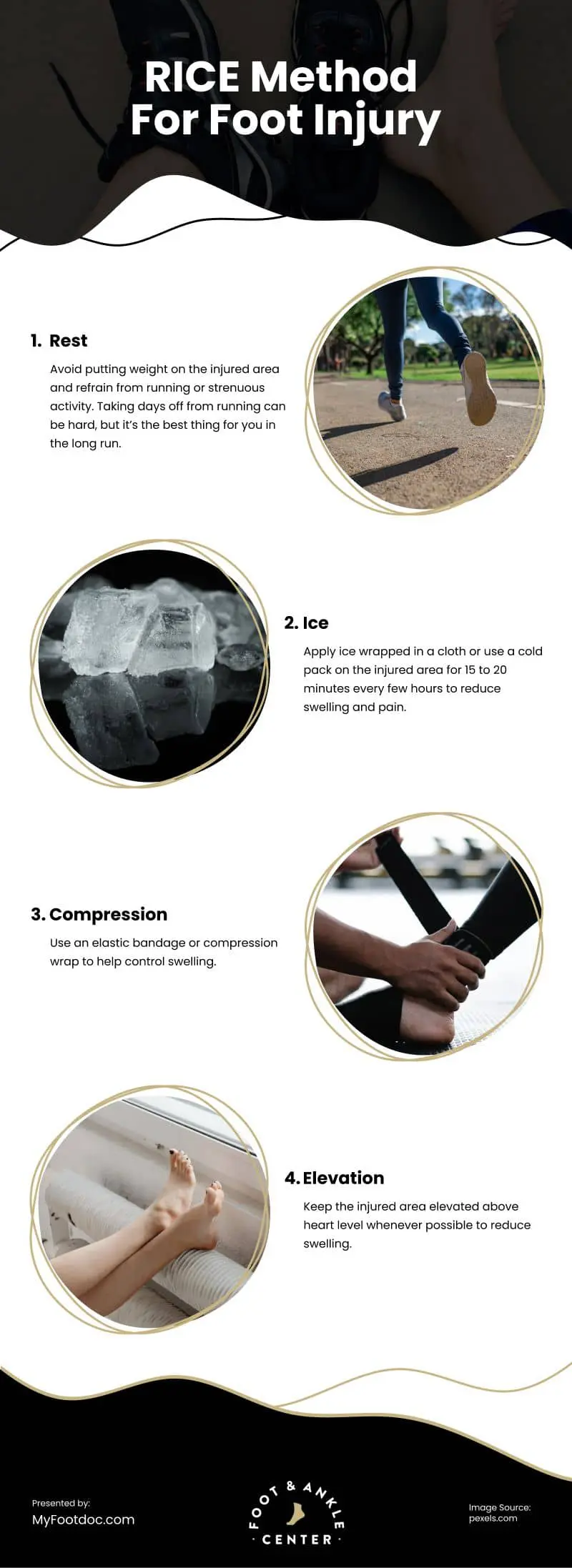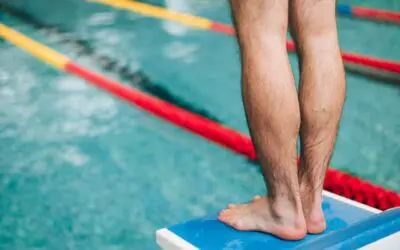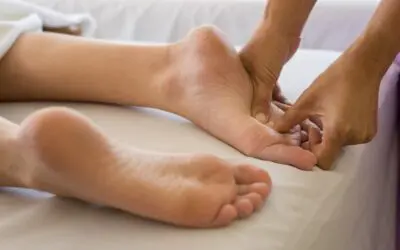With sweat dripping down your face, you check your pace. You are on track to break your 10K PR when you suddenly take a step that doesn’t land quite right. Pain shoots through your foot. You’re want to push on, but not sure you can. What should you do next?
While taking those first cautious steps after a running injury is usually a very painful experience, it can also remind you that the next steps you take for your injury are critical for your recovery. Immediately taking the right steps can make a significant difference in recovery time and overall outcome.
If you find yourself injured in the middle of a race or a run, here’s what you should do:
Stop Running and Rest
As soon as you feel intense foot pain or notice an injury, stop running immediately. Continuing to run with an injury can exacerbate the problem and potentially lead to more serious complications.
It can be tempting, especially if you are in the middle (or beginning or end) of a race, to keep pushing through the pain. Runners are notorious for having a high tolerance for pain and being able to put in miles despite blisters or sore muscles. But your future as a runner could be in jeopardy if you try to power through an injury.
Evaluate the Injury
If there is swelling, redness, bruising, or sharp pain, it’s important to take it seriously. Try to determine the location and nature of the pain or discomfort. If you are in a race, ask another runner to alert the next aid station when they reach it. Someone will be able to come and offer first aid to you.
If you are completing a run on your own, stay where you are. Call someone to come pick you up and assist you home. If you are running with a partner, have them help you so you don’t have to put any weight on your injury.
RICE Method
Once you get home, apply the RICE method. RICE (rest, ice, compression, and elevation) is a standard initial treatment for many running injuries:
Rest
Avoid putting weight on the injured area and refrain from running or strenuous activity. Taking days off from running can be hard, but it’s the best thing for you in the long run.
Ice
Apply ice wrapped in a cloth or use a cold pack on the injured area for 15 to 20 minutes every few hours to reduce swelling and pain.
Compression
Use an elastic bandage or compression wrap to help control swelling.
Elevation
Keep the injured area elevated above heart level whenever possible to reduce swelling.
When to Seek Professional Help
- If the pain is severe
- If you cannot put weight on the injured limb
- If numbness or tingling accompany the injury
- If you suspect a more serious injury such as a fracture
Particularly for injuries involving the feet or ankles, consulting a podiatrist is highly recommended. Podiatrists specialize in diagnosing and treating foot and ankle problems, and that includes running-related injuries. They can provide a detailed assessment, recommend appropriate treatment, and guide you through rehabilitation exercises tailored to your specific injury.
Follow Treatment Recommendations
Once you’ve consulted a podiatrist or another medical professional, follow their recommendations diligently. This may include additional diagnostic tests such as X-rays or MRI scans, physical therapy, orthotic devices, or a specific rehabilitation plan.
The amount of time you have to take off from running will depend on the injury. Here are some possible recovery times for common running injuries:
Achilles Tendonitis
Plan on up to 12 weeks of recovery for Achilles tendonitis treatment.
Stress Fractures
The severity of the stress fracture and the location will play big determining factors into whether you can be back on the track in six weeks or if you’ll need to take off several months.
Ankle Sprain
Minor sprains can put you out for two to four weeks, while major sprains can keep you sitting instead of jogging for up to eight weeks.
Gradual Return to Running
After receiving clearance from your healthcare provider, gradually ease back into running. Start with gentle jogging or walking and gradually increase intensity and duration as tolerated. Pay attention to any lingering discomfort or signs of reinjury.
Prevent Future Injuries
Working on strengthening your muscles, improving your flexibility, wearing appropriate footwear, and using proper running techniques to reduce your risk of future injuries.
While you might not make your PR this time, you can rest assured that by properly taking care of your injury, you are allowing your body to heal correctly so you can have a stab at it again in the future (instead of permanently ending your running career).
Videos
Infographic
If injured during a race or run, follow the RICE method: rest, ice, compression, and elevation. It’s a standard initial treatment for many running injuries. Keep reading for more in this infographic.





